Dec. 6 (Wed.),2023 〜
Jan. 14 (Sun.),2024
Our annual exhibition of the Horiuchi Ebisu Collection coincides with the “Toka Ebisu Festival” held at Nishinomiya-jinja Shrine. This year’s exhibition ‘Deity of Fortune, Ebisu’
The deity Ebisu, represented by a figure wearing a raven hat and holding a fishing rod and sea bream, is known as a deity that brings good fortune. In the Kansai region, many people visit the shrine especially on the January 10 “Toka Ebisu Festival” to pray for good fortune and prosperous business.
This exhibition introduces the widely worshipped deity Ebisu, affectionately called “Ebisu-sama” or “Ebessan,” as a familiar good-luck charm that has become a part of daily life through iconography, statues of deities, and everyday utensils. Please take a look at the various representations of Ebisu.
※ About Horiuchi Ebisu Collection
The Horiuchi Ebisu Collection was collected over many years by the late Dr. Horiuchi Kiyoshi (1924 – 2009). He was a local historian as well as a doctor of medical science. Born and raised in Nishinomiya, his collection consists mainly of works of art related to the deity Ebisu, other deities of good fortune, historical documents of local history and customs and manners.
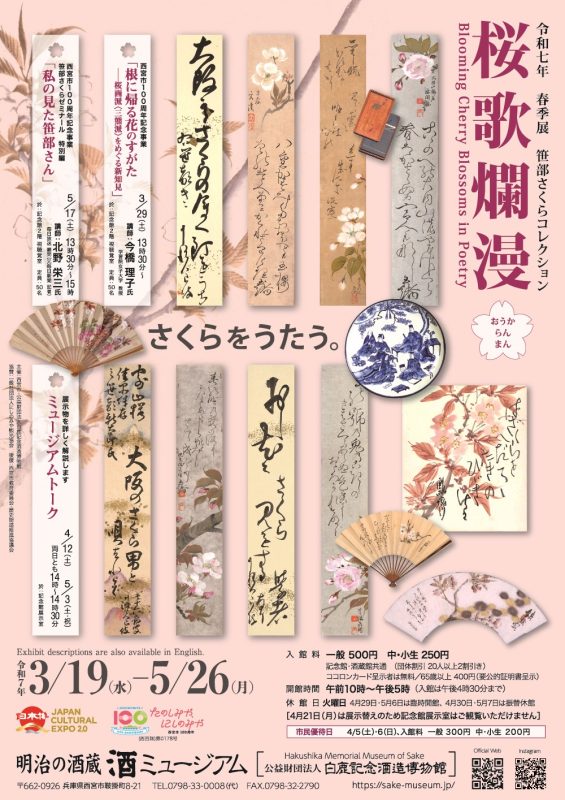


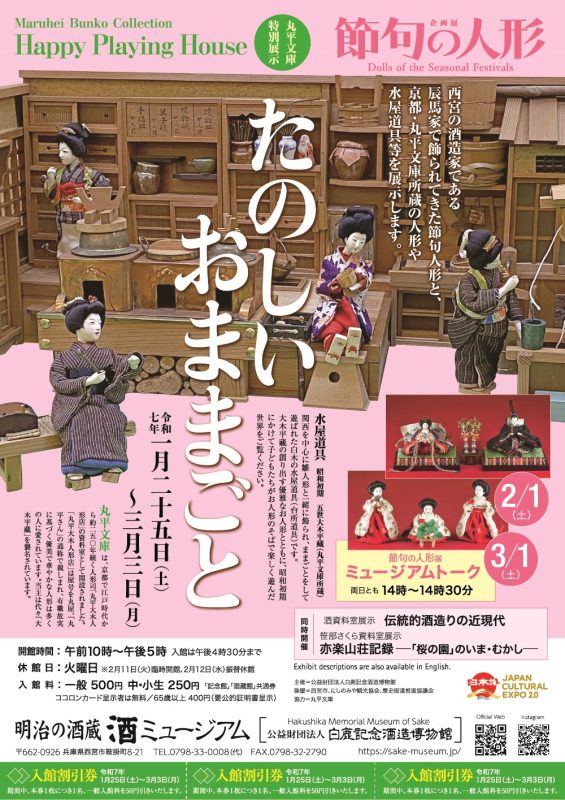
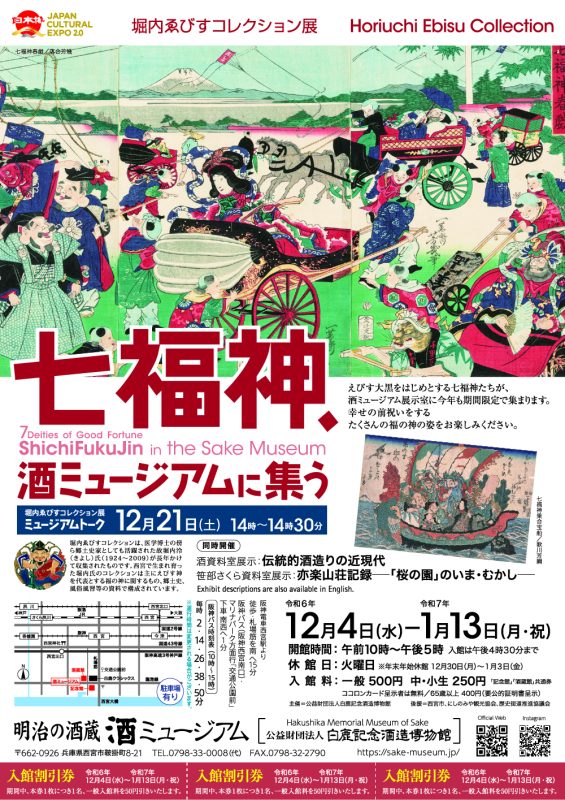
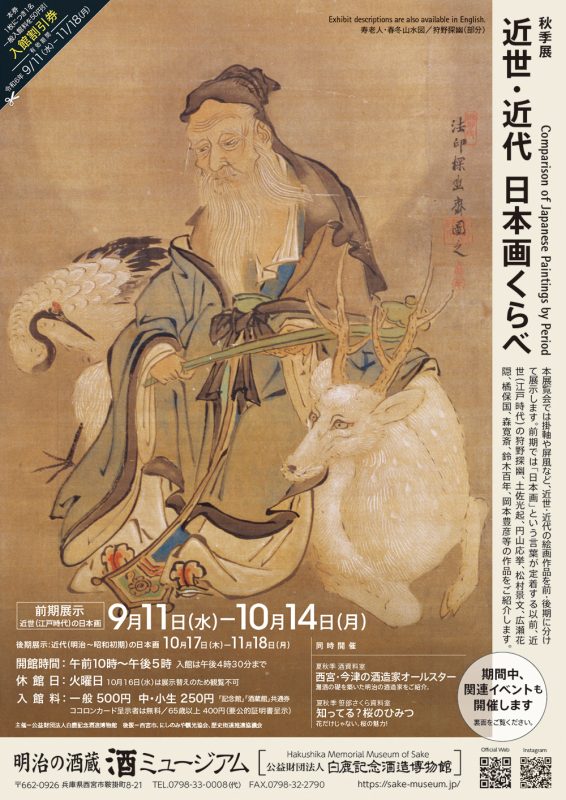
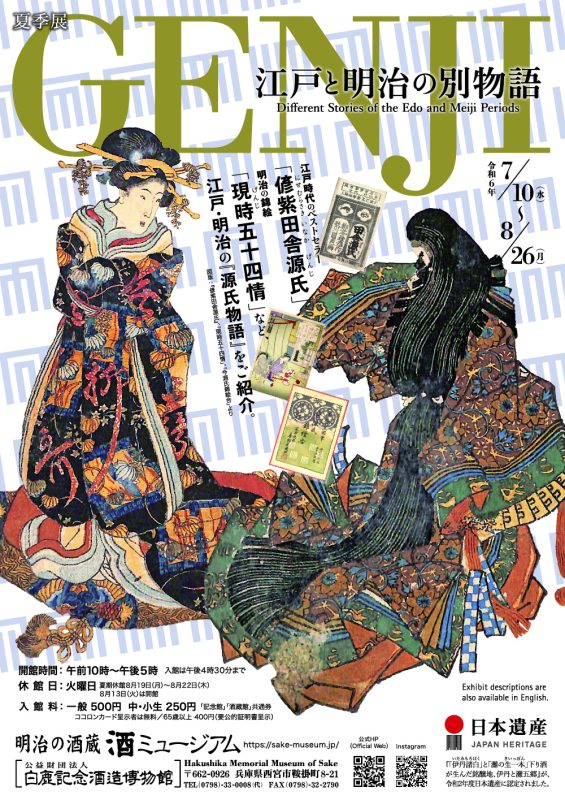
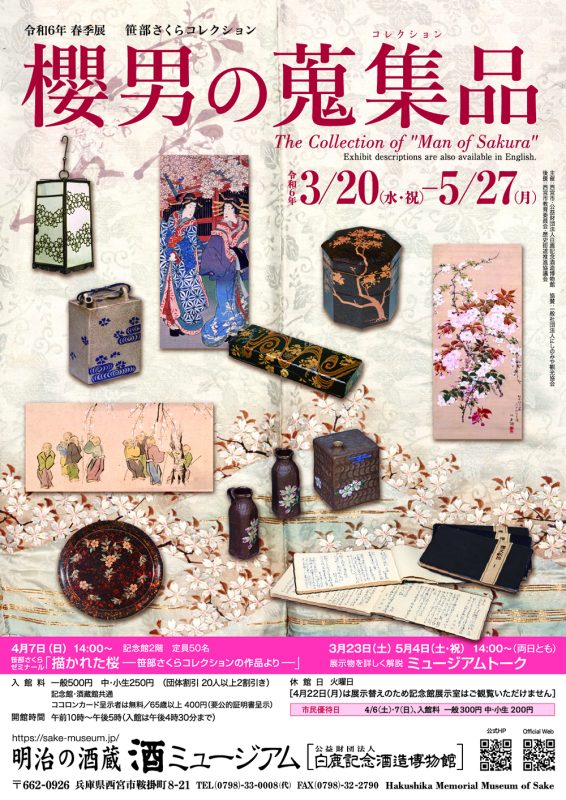
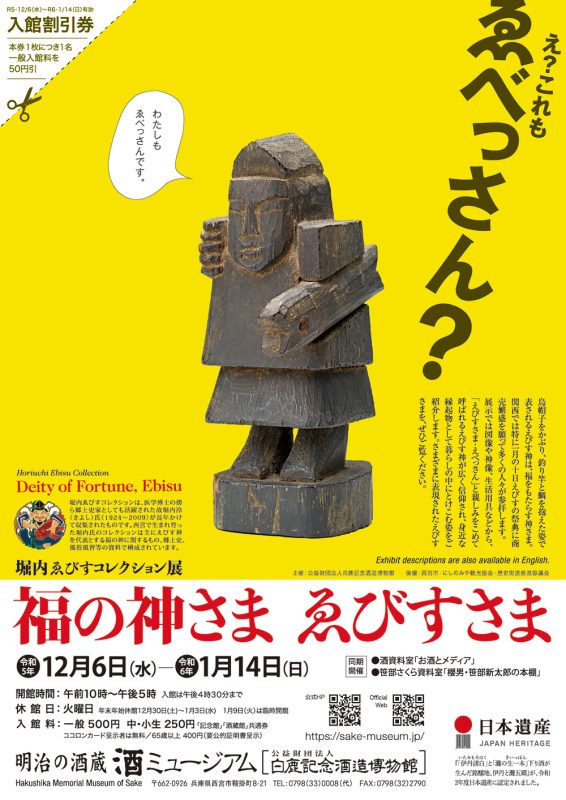
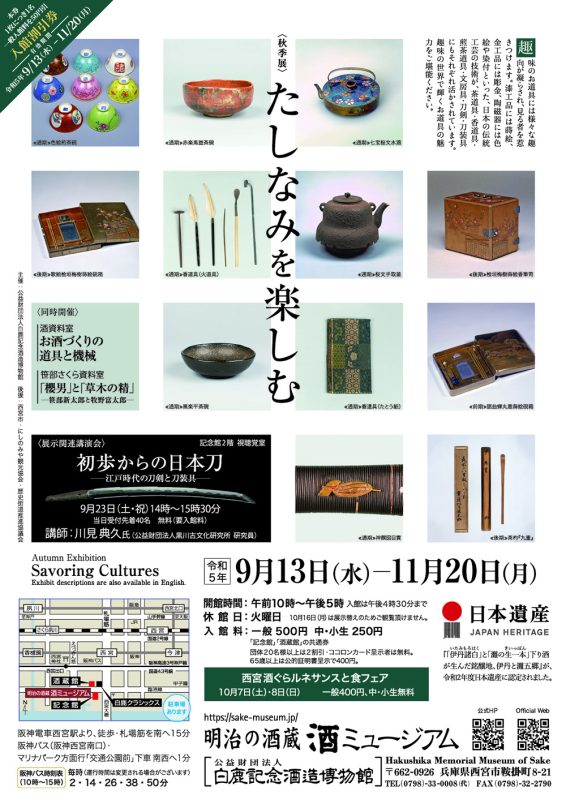
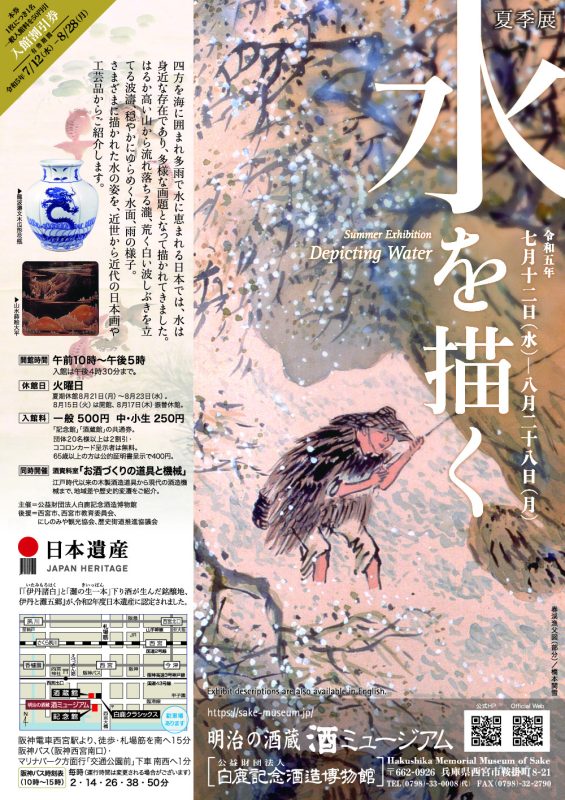
I’m deeply interested in the works of art depicting the four seasons and the items that make me feel the history.
Look! Various exhibitions are held as well as those related to sake and sakura!!